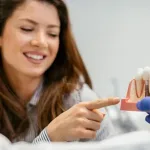Journey through Aphasia: A Master Guide to Understanding, Diagnosing, and Treating with 4 Powerful Solutions!

Brief overview of aphasia
Aphasia is a neurological condition characterized by disruptions in language functions, affecting an individual’s ability to communicate effectively. This complex disorder can result from various factors, with strokes being a predominant cause. It manifests in difficulties with speaking, understanding, reading, and writing, presenting a profound impact on daily communication. The diversity of aphasia includes different types, each with unique linguistic challenges. From the milder forms involving trouble finding words to more severe cases where individuals struggle to formulate coherent sentences, aphasia underscores the intricate connection between language and the brain. Understanding this condition is pivotal for timely diagnosis and implementing tailored interventions to support those navigating the challenges of aphasia.
What is Aphasia?
Aphasia is a neurological condition that impairs a person’s ability to use language. It can affect speaking, understanding, reading, and writing, making communication challenging for individuals experiencing it. There are different types of aphasia, each with its unique characteristics and manifestations.
What are the most common causes of aphasia?

Speech, reading, writing, and language comprehension become formidable challenges in the presence of aphasia, a communication impairment that significantly affects various aspects of linguistic expression. This condition, characterized by the inability to communicate effectively, manifests in individuals experiencing difficulties not only in verbalizing thoughts but also in understanding written and spoken language. The impact of aphasia can be profound and multifaceted, disrupting the intricate processes that underlie communication. Whether it unfolds gradually due to conditions like brain tumors or degenerative diseases, or occurs suddenly following a stroke or head injury, aphasia presents a complex landscape of linguistic struggles.
The most prevalent cause of aphasia is stroke, where the disruption of blood supply to the brain results in the rapid onset of language impairment. However, head injuries can also contribute to the manifestation of aphasia, albeit less frequently. In cases of brain tumors, aphasia can evolve progressively, aligning with the gradual growth and interference of these abnormal masses with normal brain function.
Furthermore, degenerative diseases such as Alzheimer’s contribute to the prolonged development of aphasia, as these conditions lead to increasing damage to brain tissues over time. In the realm of treatment, speech and language therapy play a pivotal role, offering individuals with aphasia strategies to relearn and enhance their communication skills. Additionally, the support of family members proves to be invaluable in the holistic approach to managing and adapting to the challenges posed by aphasia.
What are the types of aphasia?
There are two broad categories encompassing various types of language impairments: fluent and nonfluent. Damage to the temporal lobe often leads to Wernicke’s aphasia, the most prevalent form of fluent aphasia. Individuals with this condition may articulate lengthy sentences devoid of coherent meaning, incorporating unnecessary words and even inventing new ones. Understanding their speech becomes challenging, as the content lacks clarity. People with Wernicke’s aphasia are frequently oblivious to their verbal errors, and they also encounter difficulties comprehending spoken language.

In contrast, the most common type of nonfluent aphasia is Broca’s aphasia, resulting from damage primarily affecting the frontal lobe. Individuals with Broca’s aphasia may understand speech and have a clear idea of what they want to express, yet their speech is often characterized by short, effortful phrases. Omission of small words is common, adding to the linguistic challenge. Although individuals with Broca’s aphasia generally comprehend the speech of others, their awareness of their struggles often leads to frustration.
Global aphasia emerges when extensive portions of the brain’s language areas are damaged. Individuals with global aphasia face severe communication difficulties, struggling to speak or comprehend language. They may repeat words or phrases persistently and might be incapable of expressing even a few words. Understanding simple words and sentences can be a monumental challenge for them.
Various other types of aphasia result from damage to specific language areas in the brain. Some individuals may have trouble repeating words and sentences despite understanding and speaking fluently (conduction aphasia). Others may struggle to name objects they recognize and understand (anomic aphasia). In instances where blood flow to the brain is temporarily interrupted and quickly restored, as in a transient ischemic attack, language abilities may recover within a few hours or days.
How is aphasia diagnosed?
Aphasia diagnosis involves a comprehensive process combining medical evaluation and specialized language assessments. In the initial stage of the diagnostic journey, a physician, often a neurologist or speech-language pathologist (SLP), conducts a thorough examination. This includes obtaining a detailed medical history and performing a physical examination to assess the individual’s overall health. To confirm the presence and location of brain injury, imaging techniques such as Magnetic Resonance Imaging (MRI) or Computed Tomography (CT) scans are often employed.
The core of aphasia diagnosis lies in language testing, skillfully conducted by Speech-Language Pathologists (SLPs). These specialists administer speech and language tests tailored to the individual’s symptoms. Language skills assessments cover crucial aspects, including expression (ability to speak and convey meaning), comprehension (understanding spoken and written language), and proficiency in reading and writing. This thorough evaluation helps determine the type and severity of aphasia a person may be experiencing.
Categorizing aphasia into fluent and nonfluent types further refines the diagnostic process. Fluent aphasia, exemplified by Wernicke’s aphasia, involves individuals speaking in nonsensical sentences, often with added unnecessary words or invented terms. Understanding spoken language becomes challenging. On the nonfluent side, Broca’s aphasia manifests with effortful, short phrases, where individuals may understand speech but struggle to express themselves. Broca’s aphasia may also be associated with right-sided weakness or paralysis due to frontal lobe involvement. It’s essential to note that a physician is the authoritative figure for confirming the diagnosis and identifying the underlying cause of aphasia, while early intervention, particularly through speech and language therapy, proves instrumental in enhancing communication skills for individuals with aphasia.
The Impact of Aphasia on Daily Life
Living with aphasia significantly alters various facets of an individual’s daily life, introducing a spectrum of challenges that extend beyond the realm of simple communication. The impact is not confined solely to the ability to express thoughts verbally but extends into personal and professional spheres. In personal relationships, the challenges of aphasia can strain communication, leading individuals to develop coping strategies to bridge the gap. Maintaining meaningful connections becomes crucial, underscoring the importance of support from friends and family who play pivotal roles in navigating the intricacies of aphasia.
On a professional level, individuals with aphasia often face hurdles in the workplace, where effective communication is paramount. Tasks that once seemed routine may become formidable challenges, and the need for understanding and accommodation from colleagues and superiors becomes imperative. Employment opportunities may be affected, necessitating adaptations and support systems to ensure continued professional engagement. The impact on daily life is not solely about the individual’s linguistic abilities but extends to their ability to participate fully in social, familial, and occupational contexts.
Developing effective coping strategies becomes a central aspect of life for those with aphasia. These strategies go beyond language and speech exercises, encompassing a holistic approach to adapt to the challenges posed by the condition. Healthcare professionals play a vital role in guiding individuals through this process, offering support, therapy, and tools to enhance communication skills. The collaborative effort of healthcare professionals, friends, and family becomes a cornerstone in empowering individuals with aphasia to navigate their daily lives with resilience and adaptability, fostering a supportive environment that transcends the limitations posed by the condition.
What kind of speech therapy helps aphasia?
Speech therapy plays a crucial role in assisting individuals facing challenges in communication and language expression. For those experiencing difficulties in speech and language skills, tailored therapeutic approaches become instrumental. The specific type of speech therapy recommended depends on the nature and severity of the language impairment.
-
Fluent Communication Strategies:
- Focus on developing strategies for more fluid and meaningful communication.
- Emphasis on improving sentence structure, word choice, and overall coherence in speech.
- Techniques to enhance the ability to express thoughts clearly and coherently.
-
Nonfluent Communication Techniques:
- Targeted exercises to improve the effortful nature of speech.
- Emphasis on strengthening the ability to formulate concise and impactful phrases.
- Techniques to overcome challenges in verbal expression while maintaining clarity.
-
Reading and Writing Enhancement:
- Interventions to improve reading comprehension and writing skills.
- Strategies to enhance the ability to understand written text and express thoughts in written form.
- Exercises tailored to specific reading and writing difficulties experienced.
-
Augmentative and Alternative Communication (AAC):
- Implementation of tools and strategies to supplement verbal communication.
- Utilization of visual aids, symbols, or technology-based communication devices.
- Customized approaches based on the individual’s preferences and needs.
-
Multimodal Communication Approaches:
- Integration of various communication modalities, combining speech with gestures, visuals, and written elements.
- Creation of a comprehensive communication toolkit that suits the individual’s strengths and challenges.
- Focus on promoting effective communication through diverse means.
Speech therapists work closely with individuals to identify their specific communication needs and tailor interventions accordingly. The goal is to empower individuals with effective tools and techniques, fostering improved communication skills and enhancing their overall quality of life. The collaborative effort between individuals, speech therapists, and support networks is vital in achieving meaningful progress in communication abilities.
What technology is used for people with aphasia?
Various technologies are employed to assist individuals facing challenges in communication and language expression. These tools and innovations aim to enhance communication abilities and provide alternative means for expressing thoughts. Here are some technologies commonly used for individuals with language impairments:
-
Communication Apps:
- Mobile applications designed to facilitate communication through text, symbols, and images.
- Customizable interfaces to suit individual preferences and needs.
- Can be used on smartphones or tablets for convenient and portable communication support.
-
Speech Generating Devices (SGDs):
- Electronic devices that generate speech based on user input.
- Incorporate text-to-speech technology to convert typed or selected words into spoken language.
- Range from portable devices to more complex communication systems with multiple functionalities.
-
Visual Supports:
- Implementation of visual aids such as charts, schedules, or picture boards.
- Helps individuals understand and express thoughts through visual cues.
- Can be both low-tech, like printed images, or high-tech, using digital displays.
-
Text-to-Speech Software:
- Computer programs that convert written text into spoken words.
- Enables individuals to listen to written content, enhancing access to information.
- Useful for various applications, including reading books or accessing online content.
-
Augmentative and Alternative Communication (AAC) Apps:
- Specialized applications supporting alternative communication methods.
- Offer features like symbol-based communication, predictive text, and voice output.
- Can be tailored to the user’s communication preferences and abilities.
-
Brain-Computer Interfaces (BCIs):
- Advanced technology that enables communication through brain signals.
- Individuals can control devices or communicate using their brain activity.
- Still in the experimental stage but holds potential for future advancements.
-
Eye-Tracking Devices:
- Technology that tracks eye movements to control a computer interface.
- Allows individuals to select symbols or words on a screen using their gaze.
- Useful for those with limited motor control.
These technologies are designed to empower individuals with innovative tools, providing alternative means for effective communication. The selection of the most suitable technology depends on the individual’s specific needs, abilities, and preferences, and often involves collaboration with speech therapists and assistive technology specialists.
What is supportive communication for individuals with aphasia?
Supportive communication for individuals facing challenges in language expression involves adapting communication strategies to facilitate understanding and meaningful interaction. Here are key principles and approaches to support effective communication:
-
Patient and Active Listening:
- Give individuals the time they need to express themselves.
- Demonstrate patience and avoid interrupting during communication.
- Actively listen, providing non-verbal cues to show engagement and understanding.
-
Use of Visual Supports:
- Implement visual aids, such as charts, images, or written cues, to enhance comprehension.
- Visual supports can serve as valuable tools for conveying information and fostering understanding.
-
Clear and Simple Language:
- Opt for clear and straightforward language in communication.
- Break down complex information into smaller, more manageable segments.
- Avoid using ambiguous or convoluted expressions.
-
Encourage Gestures and Body Language:
- Support communication through gestures and non-verbal cues.
- Individuals may find it easier to convey or understand messages through expressive body language.
-
Patient and Empathetic Approach:
- Approach communication with empathy and understanding.
- Recognize and acknowledge the individual’s efforts, fostering a supportive and positive environment.
-
Interactive Communication Tools:
- Utilize interactive communication tools, such as communication boards or apps.
- These tools offer alternative means for individuals to express thoughts and engage in conversations.
-
Adapt to Individual Preferences:
- Recognize and adapt to the individual’s preferred mode of communication.
- Some may benefit from written communication, while others may prefer verbal or visual methods.
-
Encourage Expression Through Art and Creativity:
- Explore creative outlets like art or music as alternative forms of expression.
- Engaging in creative activities can provide individuals with diverse ways to communicate.
-
Provide Context and Repetition:
- Offer context before introducing new information or topics.
- Repetition of key points can enhance comprehension and retention.
-
Promote Two-Way Communication:
- Encourage interactive dialogue, allowing individuals to actively participate in conversations.
- Create an inclusive communication environment that values the contributions of each individual.
Supportive communication is an ongoing process that involves flexibility, understanding, and a commitment to adapting strategies based on the unique needs of the individual. Collaborating with speech therapists, caregivers, and support networks further enhances the effectiveness of these approaches.
Powerful Solutions for Aphasia
-
Medications for Language Recovery and Cognitive Function:
- In the realm of language recovery and cognitive enhancement, specific medications may be prescribed to address underlying factors contributing to communication challenges. These medications aim to optimize brain function and support the restoration of linguistic abilities. For example, drugs targeting cognitive processes or those addressing related conditions may be employed as part of a comprehensive treatment plan.
-
Cognitive Rehabilitation Strategies:
- Cognitive rehabilitation involves a structured approach to stimulate and enhance various cognitive processes affected by communication difficulties. Targeted exercises and activities are designed to engage the brain’s neural networks, fostering neuroplasticity. These activities may encompass memory exercises, problem-solving tasks, and activities focusing on language comprehension. The goal is to promote adaptive changes in the brain, potentially leading to improved cognitive function and enhanced communication skills.
-
Assistive Communication Devices and Technological Tools:
- Assistive communication devices represent a powerful solution, leveraging technology to bridge communication gaps. These devices come in various forms, from dedicated communication boards to tablet-based applications with customizable interfaces. They assist individuals in expressing thoughts and ideas through visual or auditory means, providing alternative methods for effective communication. Technological tools play a pivotal role in empowering individuals to navigate daily interactions and express themselves more confidently.
-
Lifestyle Changes for Brain Function and Recovery:
- Adopting a holistic and health-focused lifestyle can significantly contribute to brain function and aid in the recovery process. Regular physical exercise has been shown to promote neuroplasticity, enhancing the brain’s ability to adapt and reorganize. Additionally, maintaining a balanced diet rich in nutrients supports overall cognitive health. Adequate sleep is crucial, as it allows the brain to consolidate information and facilitate optimal cognitive function. Minimizing stress through relaxation techniques and engaging in mentally stimulating activities further promotes a conducive environment for recovery.
These powerful solutions encompass a multidimensional approach, addressing various aspects of cognitive function and communication. By integrating medications, cognitive rehabilitation, assistive communication devices, and lifestyle changes, individuals can embark on a comprehensive journey toward enhanced brain function and improved communication skills, fostering a more fulfilling and engaged life. Collaborating with healthcare professionals ensures that these strategies are tailored to individual needs, maximizing their effectiveness in promoting recovery and well-being.
Conclusion:
In conclusion, the journey through communication challenges unveils a landscape of diverse solutions, ranging from medications and cognitive rehabilitation to assistive devices and lifestyle adjustments. By embracing these powerful strategies, individuals can embark on a transformative path toward enhanced cognitive function and improved communication. The collaborative efforts of healthcare professionals, supportive networks, and the adoption of holistic approaches underscore the resilience and adaptability of individuals facing linguistic hurdles. Through these concerted efforts, a brighter horizon emerges, fostering not only recovery but also a renewed sense of engagement and connection in daily life.
FAQs:
Q: What communication challenges might individuals with language difficulties experience?
Answer: Individuals facing communication challenges may encounter difficulties expressing themselves verbally, understanding spoken or written language, or effectively conveying thoughts in various social and professional contexts.
Q: How can medications contribute to the improvement of language and cognitive functions?
Answer: Certain medications aim to optimize brain function and support cognitive processes, potentially aiding in the recovery of language and communication skills. These medications may target underlying factors influencing linguistic abilities.
Q: What role do assistive communication devices play in supporting effective communication?
Answer: Assistive communication devices, ranging from communication boards to advanced technological tools, serve as valuable resources. These devices help individuals express thoughts through visual or auditory means, providing alternative methods for effective communication.
Q: What lifestyle changes can positively impact cognitive function and aid in recovery?
Answer: Adopting a health-focused lifestyle, including regular physical exercise, a balanced diet, adequate sleep, and stress management, can significantly contribute to enhanced cognitive function. These lifestyle changes create an environment conducive to cognitive recovery.
Q: How can cognitive rehabilitation strategies stimulate cognitive processes and improve communication skills?
Answer: Cognitive rehabilitation involves targeted exercises and activities designed to engage the brain’s neural networks. By fostering neuroplasticity, these strategies aim to enhance cognitive function, including memory, problem-solving, and language comprehension, thereby improving overall communication skills.













